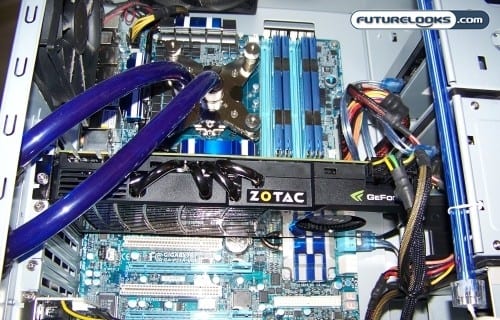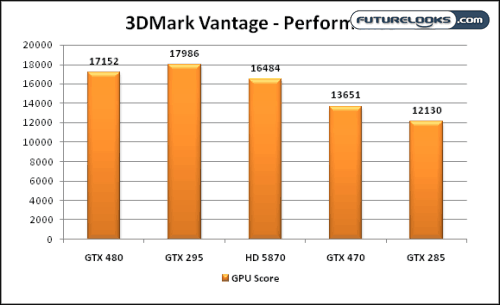Test System and Setup Notes

One of the important notes we’d like to add is that like many previous nVidia based video cards, power is essential to a stable and enjoyable gaming experience, especially if you have on of these video cards. If you’re running on a low quality 500 watt power supply, you’ll probably encounter some random issues with your system. Might we suggest a good quality 600 to 700 watt power supply to start. 1000 watts if you plan to empty your wallet for two. Granted, you may not push these video cards to their maximum power consuming limit. But if you do, a substandard power can easily bring your system crashing down or even ruin some components.
With that in mind, here is our test system optimized for gaming and video rendering perfection:
- Intel Core i7-870 Lynnfield LGA1156 Processor
- GIGABYTE GA-P55A-UD6 “Deep 6” Motherboard
- Kingston HyperX 16GB 1600MHz DDR3 Memory
- Video card 1: Zotac Geforce GTX 470
- Video card 2: Zotac Geforce GTX 480
- Video card 3: NVidia Geforce GTX 285
- Video card 4: Zotac Geforce GTX 295
- Video card 5: GIGABYTE ATI HD 5870
- Antec CP-850 Power Supply
- Antec P183 Enclosure (Puget Systems)
- Windows 7 64-bit
We used the 197.41 NVidia driver for the GTX 4xx series and 197.45 nVidia driver for the GTX 200 series video cards. The ATI Catalyst 10.3 driver was used for the GIGABYTE HD 5870 video card on hand. Additionally, vertical sync was forced off as to not limit our frame rates.
Benchmark Time
For the benchmarks, we wanted to continue using the latest benchmarks that represent the most up to date and current graphical experience possible. For that reason, we’re using main stream DX10 and DX11 applications. This includes 3DMark Vantage, Unigine Heaven Demo, Bad Company 2, Crysis, BioHazard 5, and CineBench R11.5. No scores were entered for DX10 cards under DX11 only testing.
3DMark Vantage
In past testing, sequential geForce series cards don’t very too much in performance. However, there is a big difference between the GTX 470 and GTX 480.

The GTX 470 is capable of completing 3DMark slightly ahead of the GTX 285. We’re actually surprised to see its performance is somewhere below an equally priced HD 5850. The GTX 480 easily crushes its sibling though and heads up the entire pack including the current best bang-for-buck performer, the HD 5870. At 17,152 points, it’s the fastest, stock GPU available.
Now that we’ve got a baseline down, let’s see how they do with some DirectX 11 benchmarks.
Unigine Heaven Demo (DX10 and DX11)
Using this lovely video benchmark, you can easily test all the DirectX capabilities of any video card. Since, some folks are still using Windows XP Pro and Vista, we tested both DX10 and DX11 options with 4X Anisotropic settings.

As expected, the GTX 480 lead with a healthy 45.4 frame average in DX11 with tessellation enabled and 55.8 frame in DX10 without. You’ll be happy to know that with Physx on and off in DX11, there was about a 2 frame difference so you might as well leave it on. The surprising thing is that the HD 5870 just about matched the GTX 480 when in DX10 mode. Needless to say, tessellation sure makes for better details especially during the grass and dragon scenes. Let’s keep the benches moving along…
